SDG 17 – “Strengthen the means of implementation and revitalize the global partnership for sustainable development” – is about bringing governments, civil society, the private sector and other actors together to help achieve the 2030 Agenda. There are 19 global targets and 25 indicators.
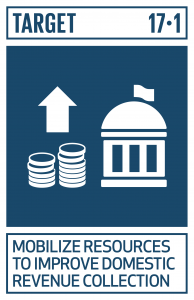 | 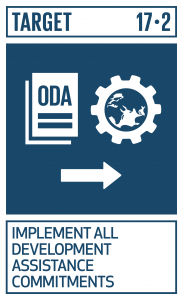 | 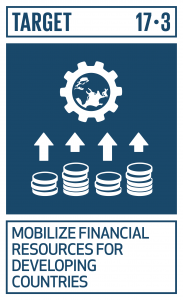 |  |  |
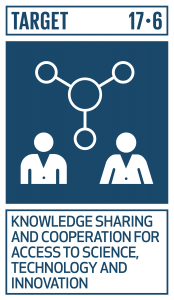 | 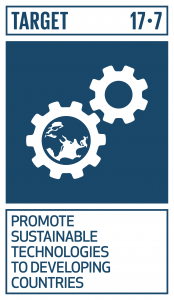 | 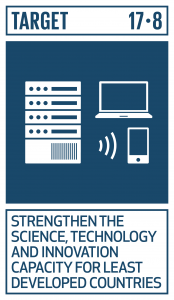 | 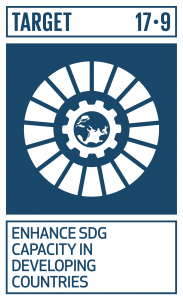 | 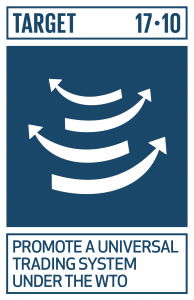 |
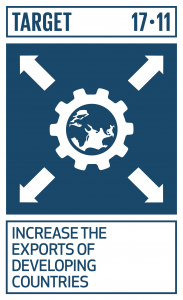 | 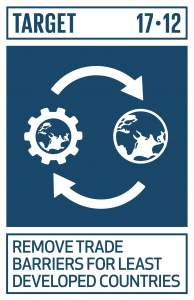 | 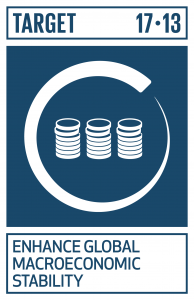 | 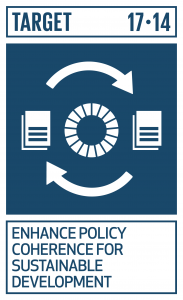 |  |
 |  | 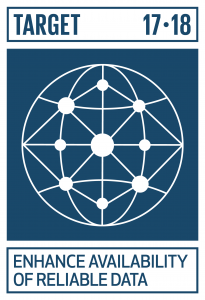 | 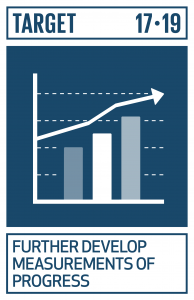 |
The targets are divided into areas representing finance (the first five), technology (six to eight), capacity building (nine), trade (10 to 12) and systemic issues (13 to 19). Some of the targets require coordinated action by developed countries – they are not targets that developing countries such as Cambodia can implement themselves.
Transition from the MDG targets to SDG 17 in Cambodia
Millenium Development Goal 8, Global partnership for development, was the closest MDG to SDG 17. There were six targets covering trade, the special needs of least-developed countries, landlocked and small island states, debt problems, pharmaceutical drug availability and new technologies.
Cambodia’s localized MDGs had no targets for Goal 8. The government regarded the goal as focused on high-income and donor countries. Cambodia did, however, track ODA resource flows. Total ODA disbursements peaked at US$1.43 billion in 2014.1 Cambodia also worked to strengthen its international partnerships.
Global Policy Watch noted in 2018 that SDG 17 “has nine additional indicators when compared with the MDGs, three of them measuring support to national statistics offices.”2 In some areas there appear to have been backward steps, however. “The MDGs assessed implementation with indicators for key policies that are not on the current list of the SDGs. For example, the measure of “untied” Official Development Assistance (ODA) has disappeared, and three indicators addressing basic trade concerns of developing countries (on tariffs for developing countries exports and agricultural subsidies of Organisation for Economic Co-operation and Development (OECD) countries) are also lost in the new set.”3
There is still considerable work to be done on the global indicators for Goal 17. As of early March 2019, there were still six Tier III indicators.4 (These are where “No internationally established methodology or standards are yet available for the indicator, but methodology/standards are being (or will be) developed or tested.”)5
Looking at the global SDG targets in more detail, Cambodia is already having considerable success in some of these areas, such as Target 17.1, improving domestic capacity for tax and other revenue collection. The Cambodian government’s 2014–18 Revenue Mobilization Strategy very successfully lifted the collection of taxes and other revenue. For example, Cambodia collected US$3.83 billion from all sources of taxes in 2017, up 18.5 percent from US$3.23 billion in 2016.6 Cambodia did not select this target as one of its CSDGs, however.
Others such as Target 17.8 – which covers capacity building around technology, especially information and communication technology – are much more of a challenge. In the Global Innovation Index for 2018, for example, Cambodia ranked 98th out of 126 countries.7 Cambodia’s background in this regard is uniquely disadvantaged – its schools and universities were closed down by the Khmer Rouge 1975–1979 and a large proportion of teachers were killed.
Localization of SDG 17 in Cambodia
Cambodia will measure its performance under Agenda 2030 primarily against the CSDG framework, and in late 2018 the Government published the targets and indicators it adopted for this Goal.8 Where the global framework for SDG 17 has 19 targets and 25 indicators, the CSDG framework has 8 targets and 10 indicators.
The targets that were not included in the CSDGs cover:
17.1 – Strengthen domestic resource mobilization, including revenue collection
17.2 – Developed countries fully implement development assistance commitments
17.4 – Assist developing countries to attain long-term debt sustainability
17.5 – Implement investment promotion regimes for least developed countries
17.7 – Share environmentally sound technologies with developing countries
17.11 – Increase developing country exports
17.12 – Implement duty/quota-free market access for least developed countries
17.13 – Enhance global macroeconomic stability
17.14 – Enhance policy coherence for sustainable development
17.15 – Respect each country’s approach to poverty eradication and development
17.16 – Enhance the global partnership for sustainable development
In many cases these require actions from developed countries, and their exclusion is in line with the Cambodian Government’s approach of generally not including targets that do not require action from them.
The targets and indicators selected by the Government are shown in the panel.
CSDG 17 Targets and indicators and responsible agencies9
Targets | Indicators and agencies responsible for the data | Baseline and target |
17.3 Mobilize additional financial resources for developing countries from multiple sources | 17.3.1 Official development assistance as % of GDP
(Cambodia Rehabilitation and Development Board/Council for the Development of Cambodia) | Baseline (2016) 7.35% of GDP Target 2025 4.09% Target 2030 3.03% |
17.6 Enhance North-South, South-South and triangular regional and international cooperation on and access to science, technology and innovation and enhance knowledge sharing on mutually agreed terms, including through improved coordination among existing mechanisms, in particular at the United Nations level, and through a global technology facilitation mechanism | 17.6.1 Percentage of population connect to fixed internet broadband subscriptions, by speed
(Ministry of Posts and Telecommunications) | Baseline (2015) 0.55% Target 2025 6.02% Target 2030 22.37% |
17.8 Fully operationalize the technology bank and science, technology and innovation capacity-building mechanism for least developed countries by 2027 and enhance the use of enabling technology, in particular information and communications technology | 17.8.1 Percentage of individuals using the internet
(Ministry of Posts and Telecommunications) | Baseline (2015) 44.11% Target 2025 61.51% Target 2030 64.65% |
17.9 Enhance international support for implementing effective and targeted capacity-building in developing countries to support national plans to implement all the sustainable development goals, including through North-South, South-South and triangular cooperation | 17.9.1 Total financial and technical assistance (including through North-South, South-South and triangular cooperation) committed to Cambodia
(Cambodia Rehabilitation and Development Board /Council for the Development of Cambodia) | Baseline (2016) 1.31% of GDP Target 2025 0.73% Target 2030 0.54% |
17.9.2 Amount of ODA to economic and development policy planning (as % of GDP) committed to Cambodia
(Cambodia Rehabilitation and Development Board /Council for the Development of Cambodia) | Baseline (2016) 0.03% of GDP Target 2025 0.01% Target 2030 0.01% | |
17.10 Promote a universal, rules-based, open, non-discriminatory and equitable multilateral trading system under the World Trade Organization, including through the conclusion of negotiations under its Doha Development Agenda | 17.10.1 The number of commercial legal norms and standards set up to facilitate local investors and investors in trading (Ministry of Commerce) | Baseline (2015) 7 Target 2025 10 Target 2030 12 |
17.17 Encourage and promote effective public, public-private and civil society partnerships, building on the experience and resourcing strategies of partnerships | 17.17.1 Amount of ODA disbursed to civil society partnerships (as % of GDP)
(CRDB/Council for the Development of Cambodia) | Baseline (2016) 0.01% of GDP Target 2025 0.008% Target 2030 0.006% |
17.18 By 2020, enhance capacity-building support to developing countries, including for least developed countries and small island developing States, to increase significantly the availability of high-quality, timely and reliable data disaggregated by income, gender, age, race, ethnicity, migratory status, disability, geographic location and other characteristics relevant in national contexts | 17.18.1 Proportion of sustainable development indicators produced at the national level with full disaggregation when relevant to the target, in accordance with the fundamental principles of official statistics
(Ministry of Planning)
| 2018 94 |
17.18.2 Proportion of budget expenditure for implementation of the National Strategy for the Development of Statistics (NSDS)
(Ministry of Planning) | Baseline (2015) 0.2% Target 2025 0.7% Target 2030 2.0% | |
17.19 By 2030, build on existing initiatives to develop measurements of progress on sustainable development that complement gross domestic product, and support statistical capacity-building in developing countries | 17.19.1 Population census every 10 years
(Ministry of Planning)
| 2019 1 2029 1 |
Means of implementation for SDG 17 in Cambodia
The means of implementation refers to the resources required to implement the SDGs. More than just financial, they also include technology, capacity building, trade and fixing systemic issues.10
Because the whole of Goal 17 is about the means of implementation, there are no separate means of implementation targets.
While there are ministries and other agencies in Cambodia responsible for reporting on the indicators (noted in the panel above), the actual implementation of the targets is not always something Cambodia has control of. A good example is target 17.9.1 – The total financial and technical assistance committed to Cambodia. Clearly, the assistance relies on other partners.
For Target 17.8, focusing on technology, Cambodia’s only selected indicator – the percentage of individuals using the internet – assesses only one tiny part of this topic. Civil society groups see a lot that can be done to implement this target, including supporting the development of technological knowledge in schools, promoting research and development, including a research model linking universities, institutions and industry, and promoting freedom of expression and the protection of intellectual property.11
Monitoring and evaluation of SDG 17 in Cambodia
The Ministry of Planning has overall responsibility for the national monitoring and evaluation programme, and will maintain the CSDG indicator database. The Ministry will be provided with the relevant data by different ministries and government agencies at the end of each reporting year, and these bodies must also provide a narrative assessment on progress. Targets will be assessed as ahead of track at least 10% ahead of the milestone), on track (within +/- 10% of the milestone) and off track (at least 10% behind the milestone).
Some of the indicators will be extremely easy to measure. That for target 17.19, for example, is just a commitment to hold a population census every ten years – something Cambodia already does. Others are likely to require work to provide comprehensive, timely and reliable figures, such as that for 17.17: “The amount of ODA disbursed to civil society partnerships (as % of GDP).”
The Cooperation Committee for Cambodia (CCC) has noted that “…the M&E capacity from one ministry to another is quite different and this may affect the overall M&E exercise of the CSDGs.”12 “…each ministry will have [a] different approach to contextualize the national strategies into their own agenda and data collection structures. As [a] result, the reporting system among the ministries will be a challenge.”13
SDG 17 will be reviewed in depth at the high-level political forum on sustainable development on 9–18 July 2019. Cambodia is one of the countries that will take part in the voluntary review at the forum.
References
- 1. Royal Government of Cambodia November 2018. “Cambodian Sustainable Development Goals (CSDGs) Framework (2016–2030)“. Accessed 9 April 2019
- 2. Global Policy Watch 2018. “SDG indicators: The forest is missing“. Accessed 18 March 2019
- 3. Ibid
- 4. Global Policy Watch 2019. “Measuring the SDGs: who controls the process, who owns the results?“. Accessed 18 March 2019.
- 5. UN Stats May 2018. “Tier Classification for Global SDG Indicators“. Accessed 18 March 2019.
- 6. Xinhuanet 2018. “Cambodia collects 3.83 bln USD taxes in 2017“. Accessed 18 March 2019.
- 7. Cornell University, INSEAD, WIPO 2018. “Global Innovation Index 2018“. Accessed 18 March 2019.
- 8. Royal Government of Cambodia November 2018. Op cit.
- 9. Ibid
- 10. Bhattacharya, Debapriya and Mohammad Afshar Ali 2014. “The SDGs – What are the Means of Implementation?“. Accessed 20 March 2019.
- 11. Cooperation Committee for Cambodia 2019. “Empowering People and Ensuring Inclusiveness and Equality“. Accessed 9 April 2019.
- 12. Ibid
- 13. Ibid

